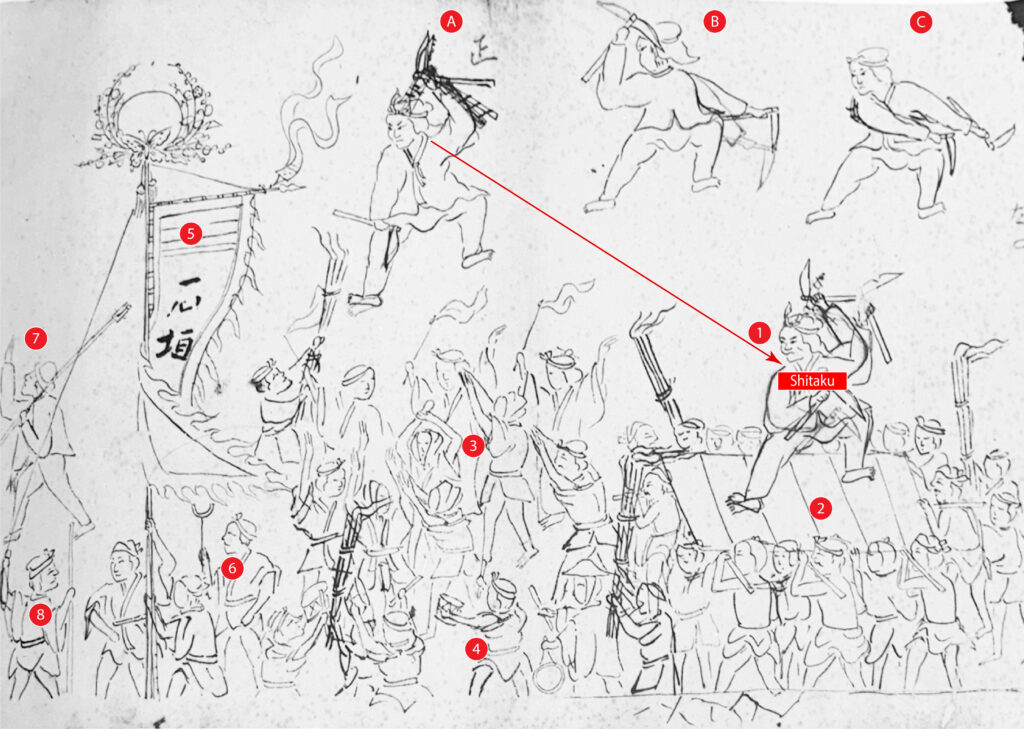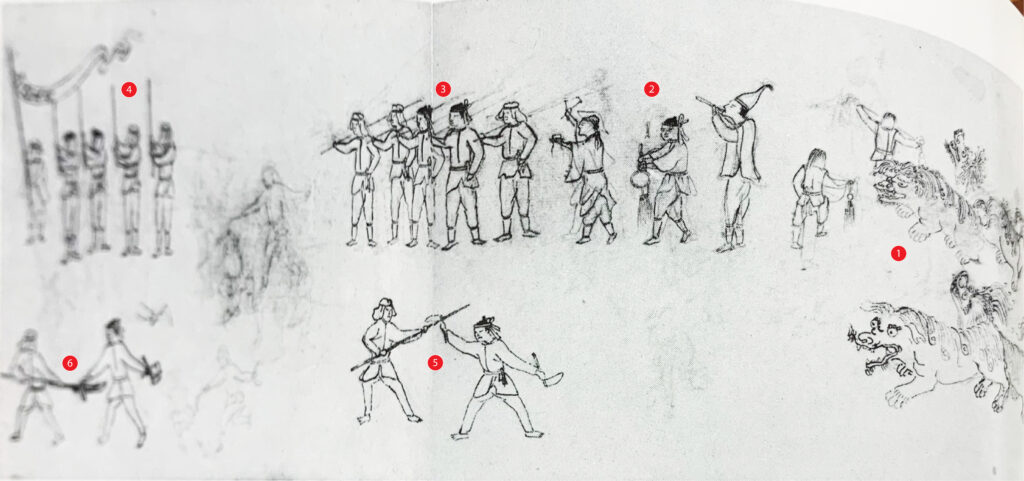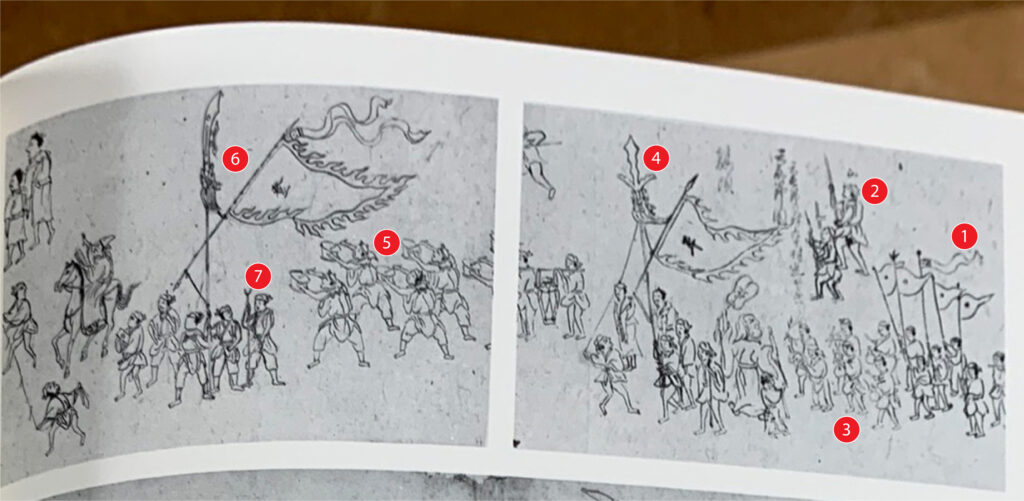It is sometimes hard to distinguish if an old photo or a demonstration on film is actually a martial art or something else. Like this, there was a question in social media about a number of sketches from the 19th century, showing some weaponry that is also used in martial arts traditions of kobudo. However, after studying it a bit, it turned out to be an folk entertainment. There are several folk entertainments in Okinawa as well as in the rest of Japan that show varying degrees of martial art influence, and sometimes it is both. In fact, sometimes kobudo is more of a folk entertainment than a martial art, but that’s another story. So here is my assessment of the sketches, which were provided unedited by my good colleague Thomas Feldmann, and edited by me.
The first sketch shows a folk performing art with “ancient warriors” in the role of shitaku during what is called “gae” (standoff). It includes martial postures and various weapons, including kama, naginata and spears (here kama are used). The three persons on top (A, B, and C) can be individual performers of martial postures, but these could also be sketches of various postures of the shitaku (1), which is the main character posing in fighting moves while wearing an ancient costume and helmet. The shitaku stands on a platform (2) carried by various villagers. usually, two villages go against each other so there would be another shitaku and they as well as other members of the group would stage a mock fight and postures. There are several torches among the persons surrounding the shitaku platform. There is what appears to be a group of dancers (3) and musicians (4) right behind the districts flag pole (5) (hatagashira), which bears the characters “Ishigaki.” There is a pole with a half-moon form on top (6) used to help raise and lower the hatagashira. As usual, there are also staff bearers (8). Finally, there might also be a firecracker gun (7).
The next sketch is also part of a folk performance, which usually takes place on fixed dates to repel insects or evils spirits, or as a prayer for good harvest during harvest festivals. There is a shishimai or lion dance (1) for entertainment, musicians (2), staff bearers (3), short staff bearers (4-foot-staffs are often used as mock swords or mock naginata), and there is a theatrical fight between 6-foot-staff and a double sickle (5) as well as glaive versus shield and short halberd (6). These are usually done in form of what we know as yakusoku kumite; these are prearranged exchanges of blows.
As regards such prearranged mock battles, please see this and read the description:
The following sketches, again, show a typical festival procession, such as held during tug-of-war and the like. Flag bearers (1), staff bearers of some sort (2), musicians (3), and a hatagashira village pole in form of an overdimensioned ancient spear (4), more drummers (5), a hatagashira village pole in form of an overdimensioned naginata (6), and again what seems to be a support staff to raise and lower the hatagashira.
And this is roughly what these 19th century sketches show.
© 2023, Andreas Quast. All rights reserved.



